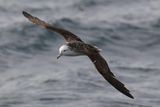Now Reading: Mid-Air Poop: How Seabirds Aid Ocean Health
-
01
Mid-Air Poop: How Seabirds Aid Ocean Health
Mid-Air Poop: How Seabirds Aid Ocean Health

Rapid Summary
- Japanese researchers studied 36 hours of footage to understand defecation patterns of streaked shearwaters, a common seabird.
- Birds attached with video cameras revealed thay poop every 4 to 10 minutes but avoid doing so while floating on water.
- Researchers theorize this pattern keeps feathers clean, avoids predators attracted by the smell, and possibly aids in easier excretion.
- Shearwaters are pelagic birds whose droppings significantly contribute to marine ecosystems as fertilizer with high nitrogen-phosphorus content.
- It’s estimated that Procellariiformes birds deposit approximately six Titanic-sized loads of feces into oceans daily, supporting aquatic life forms like plankton and small marine creatures.
Indian Opinion Analysis
This study highlights nature’s intricate ecological balances and the surprising role of seabird defecation in maintaining ocean health. For a nation reliant on maritime biodiversity like India-with its vast coastline-the findings underscore the importance of preserving ecosystems where seemingly minor phenomena play critical roles. Fertilization from seabirds potentially impacts nutrient cycles that support fish populations integral to Indian fisheries and livelihoods dependent on coastal resources.
Further scientific exploration like Uesaka’s-potentially mapping these contributions-may help policymakers improve conservation strategies not only around India’s shores but across neighboring regions reliant on similar biodiversity systems.
























